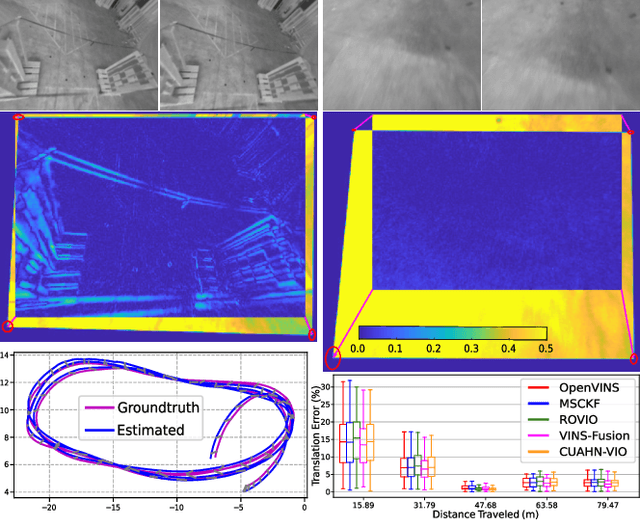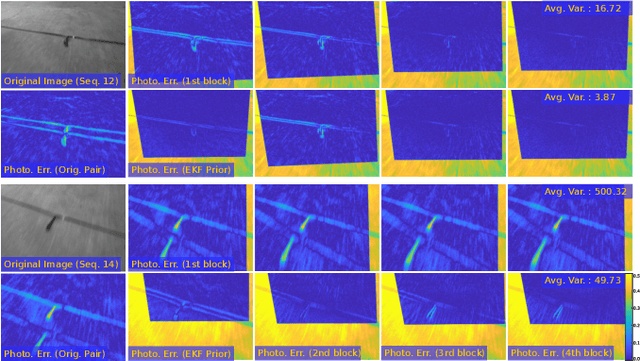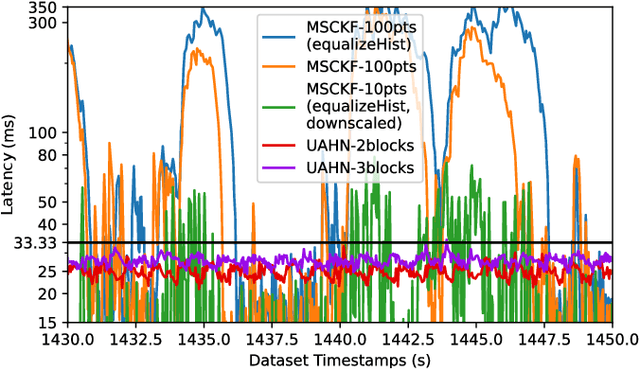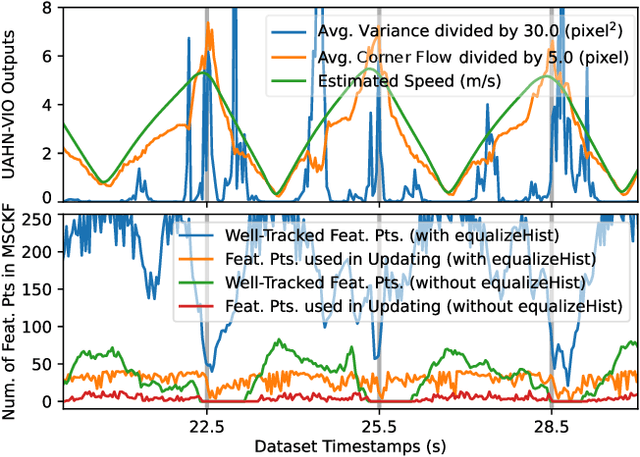CUAHN-VIO: Content-and-Uncertainty-Aware Homography Network for Visual-Inertial Odometry
Paper and Code
Aug 30, 2022



Learning-based visual ego-motion estimation is promising yet not ready for navigating agile mobile robots in the real world. In this article, we propose CUAHN-VIO, a robust and efficient monocular visual-inertial odometry (VIO) designed for micro aerial vehicles (MAVs) equipped with a downward-facing camera. The vision frontend is a content-and-uncertainty-aware homography network (CUAHN) that is robust to non-homography image content and failure cases of network prediction. It not only predicts the homography transformation but also estimates its uncertainty. The training is self-supervised, so that it does not require ground truth that is often difficult to obtain. The network has good generalization that enables "plug-and-play" deployment in new environments without fine-tuning. A lightweight extended Kalman filter (EKF) serves as the VIO backend and utilizes the mean prediction and variance estimation from the network for visual measurement updates. CUAHN-VIO is evaluated on a high-speed public dataset and shows rivaling accuracy to state-of-the-art (SOTA) VIO approaches. Thanks to the robustness to motion blur, low network inference time (~23ms), and stable processing latency (~26ms), CUAHN-VIO successfully runs onboard an Nvidia Jetson TX2 embedded processor to navigate a fast autonomous MAV.
 Add to Chrome
Add to Chrome Add to Firefox
Add to Firefox Add to Edge
Add to Edge